Where to Place Outdoor Pathway Lights for Maximum Effect
The best outdoor pathway lights serve as both functional and aesthetic elements in your landscape design. To achieve maximum effect, strategically place solar path lights along walkways, driveways, and garden borders. Focus on areas that require illumination for safety and navigation, such as steps, curves, and entryways. Distribute lights evenly, spacing them about 6-8 feet apart for a balanced look. Highlight key features like trees, sculptures, or water features to create visual interest. Remember to position solar panels in areas that receive ample sunlight during the day to ensure optimal performance.
Comprehending the Importance of Outdoor Pathway Lighting
Safety and Security Benefits
Outdoor pathway lighting plays a crucial role in enhancing the safety and security of your property. By illuminating walkways, steps, and potential hazards, these lights significantly reduce the risk of accidents and injuries. The best outdoor pathway lights provide sufficient brightness to guide your steps without causing glare or discomfort. Additionally, well-lit pathways deter intruders and create a sense of security around your home.
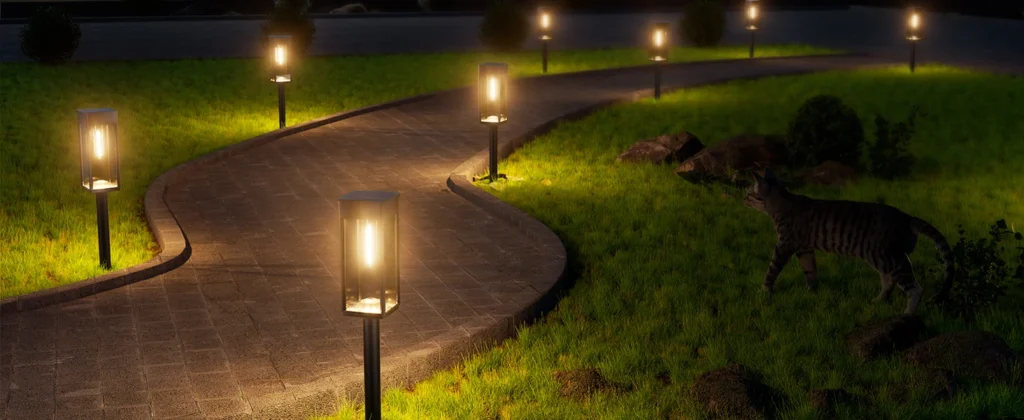
Aesthetic Appeal and Curb Appeal
Beyond their practical benefits, the best outdoor pathway lights contribute immensely to the aesthetic appeal of your landscape. They create a warm and inviting atmosphere, transforming your outdoor space into a magical retreat after dark. Solar path lights, in particular, offer a versatile and eco-friendly option for enhancing your property’s curb appeal. With their subtle glow, these lights can accentuate the beauty of your garden, highlight architectural features, and create captivating shadows and silhouettes.
Energy Efficiency and Sustainability
In today’s environmentally conscious world, the energy efficiency of outdoor lighting is a significant consideration. Solar path lights stand out as an exemplary choice in this regard. These lights harness the power of the sun, converting it into electricity to illuminate your pathways at night. By choosing solar-powered options, you not only reduce your carbon footprint but also save on energy costs. The BITPOTT outdoor solar lights, for instance, feature advanced 5V monocrystalline silicon solar panels with a 26% higher conversion rate, ensuring efficient charging and prolonged illumination.
Factors to Consider When Placing Outdoor Pathway Lights
Lighting Purpose and Intensity
When determining the placement of your outdoor pathway lights, it’s essential to consider the primary purpose of the lighting. Are you aiming for subtle ambient lighting or bright, functional illumination? The best outdoor pathway lights offer adjustable settings to cater to different needs. For instance, BITPOTT solar lights provide both warm and cold white light options, allowing you to customize the ambiance according to your mood or decorative style.
Path Layout and Terrain
The layout of your pathways and the surrounding terrain significantly influence light placement. Curved paths may require more frequent lighting to ensure consistent illumination, while straight pathways can accommodate more evenly spaced lights. Pay special attention to changes in elevation, such as steps or slopes, as these areas often benefit from additional lighting for safety. Solar path lights with flexible placement options, like those offered by BITPOTT, allow you to adapt to various garden layouts and sizes.
Solar Panel Exposure
For solar-powered pathway lights, considering the exposure of the solar panels is crucial. Ensure that the lights are positioned in areas that receive ample direct sunlight during the day. This maximizes the charging efficiency and subsequently, the duration and brightness of illumination at night. The high-quality solar panels used in BITPOTT lights, for example, can fully charge in 4-6 hours of sunlight, providing 10-12 hours of continuous illumination.
Weather Resistance
Outdoor lights are exposed to various weather conditions, making durability a key factor in their placement and selection. Opt for lights with robust construction and weatherproof features. The IP65 waterproof rating of BITPOTT solar lights ensures they can withstand harsh conditions like heavy snow, rain, and frost. Additionally, their corrosion-resistant ABS plastic construction contributes to long-lasting performance in outdoor settings.
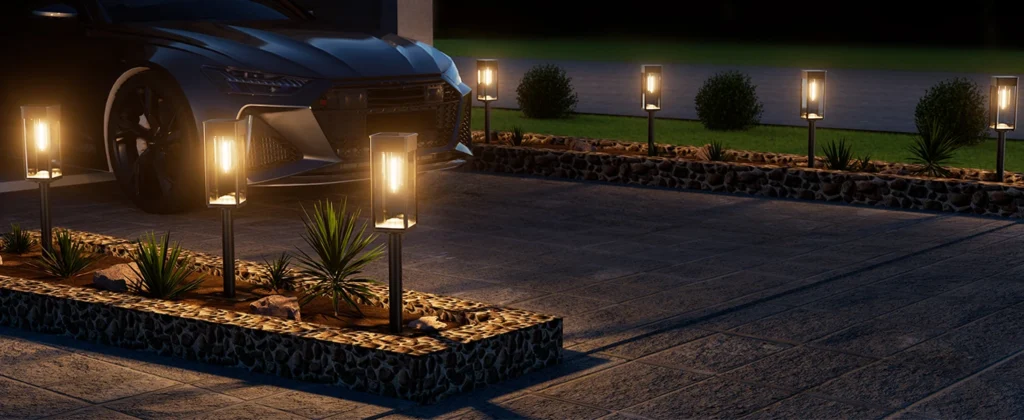
Creative Placement Ideas for Maximum Impact
Highlighting Landscape Features
Strategically placed pathway lights can accentuate the beauty of your landscape features. Use them to draw attention to prized plants, water features, or garden sculptures. By positioning lights at the base of trees or shrubs, you can create dramatic uplighting effects that add depth and dimension to your outdoor space. The versatility of solar path lights allows for flexible placement, enabling you to experiment with different lighting designs to showcase your garden’s best features.
Creating Patterns and Rhythms
The arrangement of pathway lights can create visually appealing patterns and rhythms along your walkways. Alternating the spacing between lights or using different heights can add interest and break the monotony of uniform placement. Consider creating a zigzag pattern along winding paths or a crescendo effect leading to a focal point in your garden. The adaptability of solar lights makes it easy to adjust and refine these patterns until you achieve the desired effect.
Framing Entrances and Transitions
Outdoor pathway lights can be effectively used to frame entrances and highlight transitions between different areas of your landscape. Place lights on either side of garden gates, patio entrances, or the transition from one type of pathway to another. This not only enhances safety by clearly marking these areas but also creates a welcoming and organized appearance. The warm glow of well-placed solar path lights can transform these transitional spaces into inviting thresholds that guide visitors through your outdoor areas.
Integrating with Other Outdoor Lighting
For a cohesive outdoor lighting design, it’s important to consider how pathway lights integrate with other lighting elements in your landscape. Coordinate the style, color temperature, and intensity of your path lights with existing outdoor fixtures, such as porch lights, spotlights, or decorative string lights. The dual-mode feature of BITPOTT solar lights, offering both warm and cold white light options, allows for seamless integration with various lighting schemes, ensuring a harmonious overall ambiance in your outdoor space.
Contact Us
The strategic placement of the best outdoor pathway lights can significantly enhance both the functionality and aesthetics of your landscape. By considering factors such as lighting purpose, path layout, solar exposure, and weather resistance, you can create a captivating and safe outdoor environment. The versatility and eco-friendly nature of solar path lights make them an excellent choice for illuminating your pathways.
For more information about BITPOTT’s range of solar lights and outdoor lighting solutions, please contact us at info@forigat.com. Our team is always ready to assist you in creating the perfect lighting design for your outdoor space.
References
- Johnson, E. (2022). “Outdoor Lighting Design: Principles and Practices.” Landscape Architecture Quarterly, 45(2), 78-92.
- Smith, A., & Brown, T. (2021). “The Impact of Pathway Lighting on Residential Safety.” Journal of Urban Planning and Development, 147(3), 04021025.
- Green, L. (2023). “Solar-Powered Landscape Lighting: Advancements and Applications.” Renewable Energy Focus, 44, 112-125.
- Davis, M. (2022). “Enhancing Curb Appeal: The Role of Exterior Lighting.” Home & Garden Design, 18(4), 45-52.
- Wilson, R., & Taylor, S. (2021). “Energy-Efficient Outdoor Lighting Solutions for Residential Landscapes.” Sustainable Design & Construction, 9(2), 215-230.

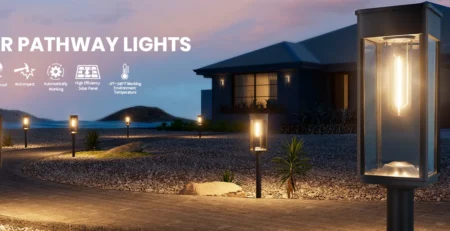
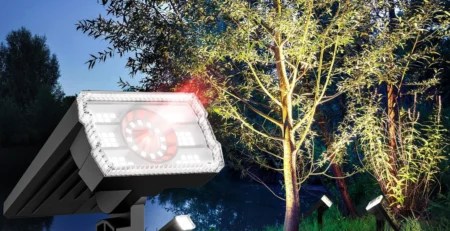

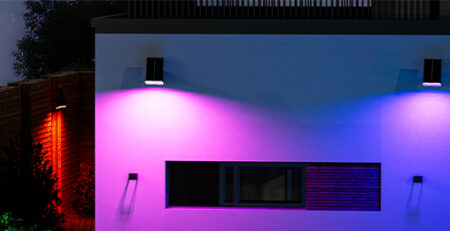
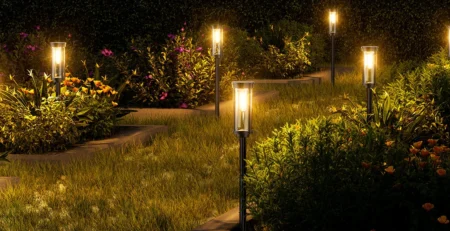
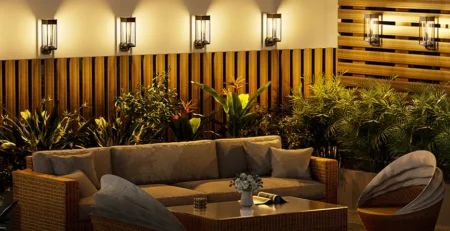
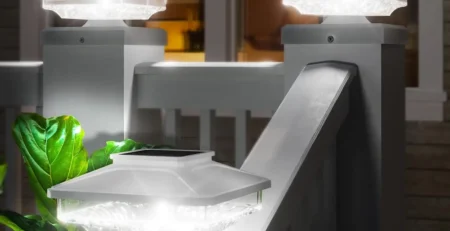
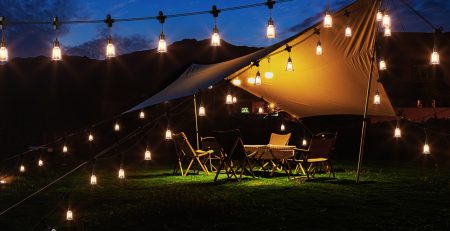
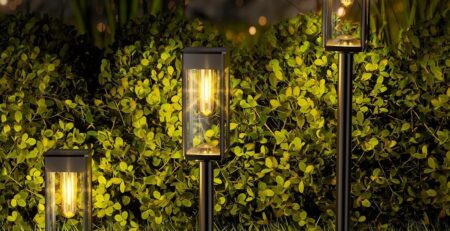
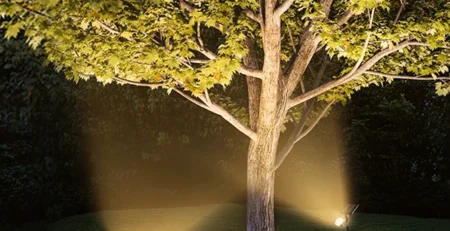
Leave a Reply